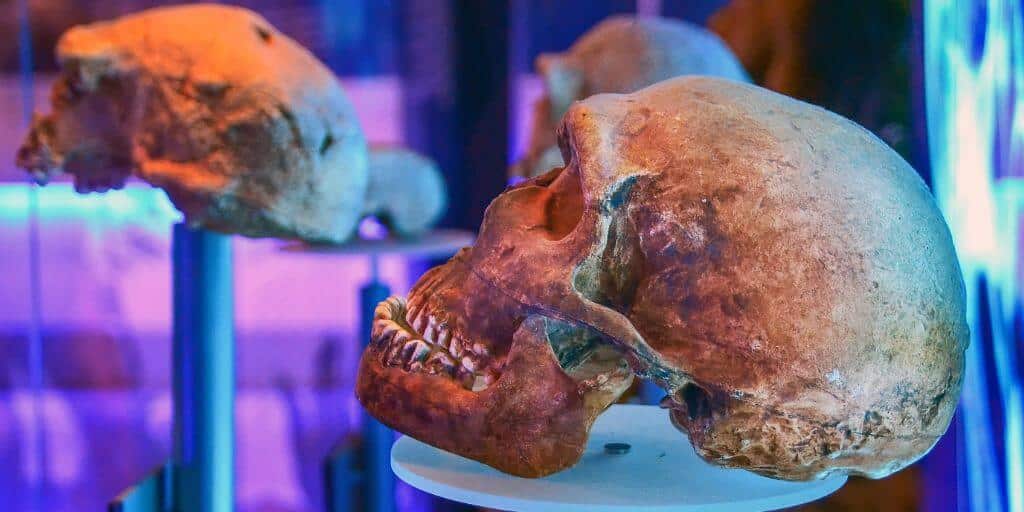Does the Abrupt Appearance of Animal Body Plans Match the Darwinian Evolutionary Model?

In this blog, we’ll answer the question: Does the Abrupt Appearance of Animal Body Plans Match the Darwinian Evolutionary Model?
Does the Abrupt Appearance of Animal Body Plans Match the Darwinian Evolutionary Model?
Dr. John Ankerberg: Alright, folks, this clip sets up what we are going to be talking about, so watch.
Narrator: The sudden appearance of animal body plans deepens the Cambrian mystery in another way. The Darwinian model predicts that as new biological forms evolved, simple to complex, they developed gradually from the smallest differences in classification to the largest, or from the bottom up.
Jonathan Wells: Darwin’s idea was that, given enough time, evolution would lead to new species, new families, orders and eventually phyla. And only after millions and millions of generations do you end up with, you know, the several dozen phyla that we see around us nowadays. That would be the bottom-up pattern predicted by Darwin’s theory.
Paul Nelson: Now, the other picture is top-down. The top-down picture says the primary differences are original: They are there right at the start. When you find mollusks in the fossil record, or the arthropods, boom, there they are, with the major differences present right at the beginning. So the upper-level architecture is top-down, present, right there.
Dr. John Ankerberg: Stephen, this is a tremendous clip, and it’s an important clip, and it raises the issue of the pattern of appearance of body plans in the fossil record. What issues does this bring forth?
Dr. Stephen Meyer: The standard answer in contemporary evolutionary theory is that natural selection acts on random mutations to generate new variations in form and structure that eventually accumulate to become major differences that we would demarcate as separate body plans.
Dr. John Ankerberg: That’s the theory.
Dr. Stephen Meyer: That’s the theory. But there are several problems that have emerged with that explanation, and they are very fundamental and profound problems. In the mid 1980’s there were a couple of scientists, Christiane Nusslein-Volhard and Eric Wieschaus, who won the Nobel Prize for some important work that they were doing mapping the genome of the hapless fruit fly.
Dr. John Ankerberg: Yes, I think it’s an interesting story.
Dr. Stephen Meyer: And what Nusslein-Volhard and Wieschaus did was they effectively reverse engineered the genome of the fruit fly. They would knock out particular genes and then they would see what would develop, or what wouldn’t develop. So they’d knock out a particular gene and they’d find that that would affect eye function, or cause it to diminish; or they’d knock out another gene and would find that it would deform the wing or something. So they were able to figure out which parts of the genome affected the different parts of the animal as it developed. And for this work they got a Nobel Prize. It was a fantastic piece of scientific investigation.
In addition to mapping the fruit fly genome, these two scientists made a discovery that has profound implications for evolutionary theory. They found that if the mutations they induced were induced early in the development of the embryo, as it moved from embryonic form to adult form, that invariably the development of the animal would shut down. They called this the problem of embryonic lethals, because in fact the developing fruit fly would just die if there were mutations induced early in the development of the animal.
Now, your viewers may remember from biology class that as embryos develop they’ll go through a pattern of cell division where it’ll be the fertilized egg, it will divide into two cells, into four, into eight and so on, and eventually thousands of different cells. Now, if you wanted to build a new body plan, you would have to induce mutations early in the process. Because if the mutations occur very late in the development they’re only going to affect a small cluster of cells as the animal is developing through all these various divisions. So it’s only the cells at the very beginning which can possibly affect the whole architecture of the animal itself. And yet, these two German scientists found that inducing the mutations early always caused a termination of the pattern of development.
Dr. John Ankerberg: Which is kind of serious.
Dr. Stephen Meyer: Which is really serious, because the very kind of mutations you’d need to develop a new body plan in the process of evolution are the very kind that we know always kill the animal. So the kind of mutations you need are early-acting, body plan affecting mutations which are also beneficial—and they never occur. We got early acting body plan affecting mutations, but they’re never beneficial; they’re always lethal. The kind we don’t need, mutations that occur much later that affect only a small cluster of cells, those may be beneficial, but they would never change a body plan. So there’s a kind of a Catch-22: The kind you need you don’t get; the kind you get you don’t need. And this is a big problem for the Cambrian explosion.
Dr. John Ankerberg: I’d say it’s a real big problem.
Dr. Stephen Meyer: Well, it’s a problem for explaining the Cambrian explosion, because the Cambrian explosion is, after all, the event in which we get the origin of new body plans. And yet, the Darwinian mechanism doesn’t seem to be able to produce a change on that scale of innovation.
Extracted from our series The Case for Intelligent Design, available through our website








